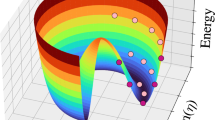Abstract
The introduction of the resolution-of-the-identity (RI) approximation for electron repulsion integrals in quantum chemical calculations requires in addition to the orbital basis so-called auxiliary or fitting basis sets. We report here such auxiliary basis sets optimized for second-order Møller–Plesset perturbation theory for the recently published (Weigend and Ahlrichs Phys Chem Chem Phys, 2005, 7, 3297–3305) segmented contracted Gaussian basis sets of split, triple-ζ and quadruple-ζ valence quality for the atoms Rb–Rn (except lanthanides). These basis sets are designed for use in connection with small-core effective core potentials including scalar relativistic corrections. Hereby accurate resolution-of-the-identity calculations with second-order Møller–Plesset perturbation theory (MP2) and related methods can now be performed for molecules containing elements from H to Rn. The error of the RI approximation has been evaluated for a test set of 385 small and medium sized molecules, which represent the common oxidation states of each element, and is compared with the one-electron basis set error, estimated based on highly accurate explicitly correlated MP2–R12 calculations. With the reported auxiliary basis sets the RI error for MP2 correlation energies is typically two orders of magnitude smaller than the one-electron basis set error, independent on the position of the atoms in the periodic table.
Similar content being viewed by others
References
Ahlrichs R, Bär M, Häser M, Horn H, Kömel C (1989). Chem Phys Lett 162:164–169
Andrae D, Häussermann U, Dolg M, Stoll H, Preuss H (1990). Theor Chim Acta 77:123–141
Bachorz R, Klopper W, Gutowski M (2007) (to be published)
Dolg M, Stoll H, Preuss H (1989). Theor Chim Acta 75:173–194
Dunlap BI, Connolly JWD, Sabin JR (1979). J Chem Phys 71:3396–3402
Dunning TH (1989). J Chem Phys 90:1007–1023
Dunning TH, Peterson KA, Wilson AK (2001). J Chem Phys 114:9244–9253
Eichkorn K, Weigend F, Treutler O, Ahlrichs R (1997). Theor Chem Acc 97:119–124
Haase F, Ahlrichs R (1993). J Comp Chem 14:907–912
Häser M, Ahlrichs R (1989). J Comput Chem 10:104–111
Hättig C (2005). Phys Chem Chem Phys 7:59–66
Hättig C, Weigend F (2000). J Chem Phys 113:5154–5162
Kaupp M, Schleyer PV, Stoll H, Preuss H (1991). J Chem Phys 94:1360–1366
Kendall RA, Dunning TH, Harrison RJ (1992). J Chem Phys 96:6796–6806
Klopper W (1991). Chem Phys Lett 186:583–585
Klopper W, Kutzelnigg W (1987). Chem Phys Lett 134:17–22
Klopper W, Manby FR, Ten-no S, Valeev EF (2006). Int Rev Phys Chem 25:427–468
Leininger T, Nicklass A, Küchle W, Stoll H, Dolg M, Bergner A (1996). Chem Phys Lett 255:274–280
Manby FR (2003). J Chem Phys 119:4607–4613
Metz B, Stoll H, Dolg M (2000). J Chem Phys 113:2563–2569
Peterson KA, Figgen D, Goll E, Stoll H, Dolg M (2003) J Chem Phys 119:11, 113–11, 123
Schäfer A, Huber C, Ahlrichs R (1994). J Chem Phys 100: 5829–5835
Vahtras O, Almlöf JE, Feyereisen MW (1993). Chem Phys Lett 213:514–518
Villani C, Klopper W (2005). J Phys B 38:2555–2567
Villani C, A Glöß, Hättig C, Klopper W (2007) (to be published)
Weigend F (2002). Phys Chem Chem Phys 4:4285–4291
Weigend F (2006). Phys Chem Chem Phys 8:1057–1065
Weigend F, Ahlrichs R (2005). Phys Chem Chem Phys 7:3297–3305
Weigend F, Häser M (1997). Theor Chem Acc 97:331–340
Weigend F, Häser M, Patzelt H, Ahlrichs R (1998). Chem Phys Lett 294:143–152
Weigend F, Köhn A, Hättig C (2002). J Chem Phys 116:3175–3183
Whitten JL (1973). J Chem Phys 58:4496–4501
Wilson AK, Woon DE, Peterson KA, Dunning TH (1999). J Chem Phys 110:7667–7676
Woon DE, Dunning TH (1993). J Chem Phys 98:1358–1371
Author information
Authors and Affiliations
Corresponding author
Rights and permissions
About this article
Cite this article
Hellweg, A., Hättig, C., Höfener, S. et al. Optimized accurate auxiliary basis sets for RI-MP2 and RI-CC2 calculations for the atoms Rb to Rn. Theor Chem Acc 117, 587–597 (2007). https://doi.org/10.1007/s00214-007-0250-5
Received:
Accepted:
Published:
Issue Date:
DOI: https://doi.org/10.1007/s00214-007-0250-5



